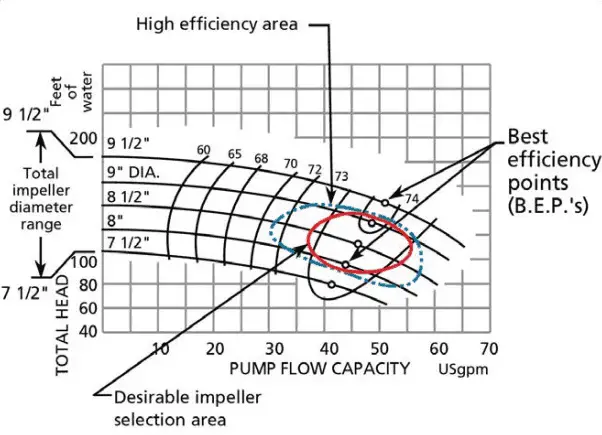Pump Efficiency
Pump efficiency is the ratio of the water horsepower delivered by the pump and the brake horsepower delivered to the pump shaft. When selecting a pump, a key concern is optimizing pumping efficiency. The energy usage in a pumping installation is determined by the flow required, the height lifted and the length and friction characteristics of the pipeline. The power required to drive a pump is defined simply using SI units by:
where:
- P is the input power required (W)
- BHP is the brake horsepower
- ρ is the fluid density (kg/m3 )
- g is the standard acceleration of gravity (9.81 m/s2 )
- H is the net pump head added to the flow (m)
- Q is the flow rate (m3 /s)
- η is the efficiency of the pump
Best Efficiency Point

The internal losses are caused by fluid friction in the impeller due to rapid change in flow direction and change in velocities throughout the pump. The external losses are caused by mechanical losses in seals and bearings. All points to the right or left of the BEP have a lower efficiency. Pumps should be sized as close as possible to its best efficiency point or flow rate. This not only makes the pump more efficient but also improves the reliability of the pump. Note that total efficiency is never realized because of mechanical and hydraulic losses incurred in the pump.
Impeller design is the most significant factor for determining the BEP of a pump because it determines how efficiently power (brake horsepower or BHP) is transmitted to the liquid being pumped. A properly designed impeller optimizes flow while minimizing turbulence and maximizing efficiency.
We hope, this article, Best Efficiency Point – BEP, helps you. If so, give us a like in the sidebar. Main purpose of this website is to help the public to learn some interesting and important information about thermal engineering.
